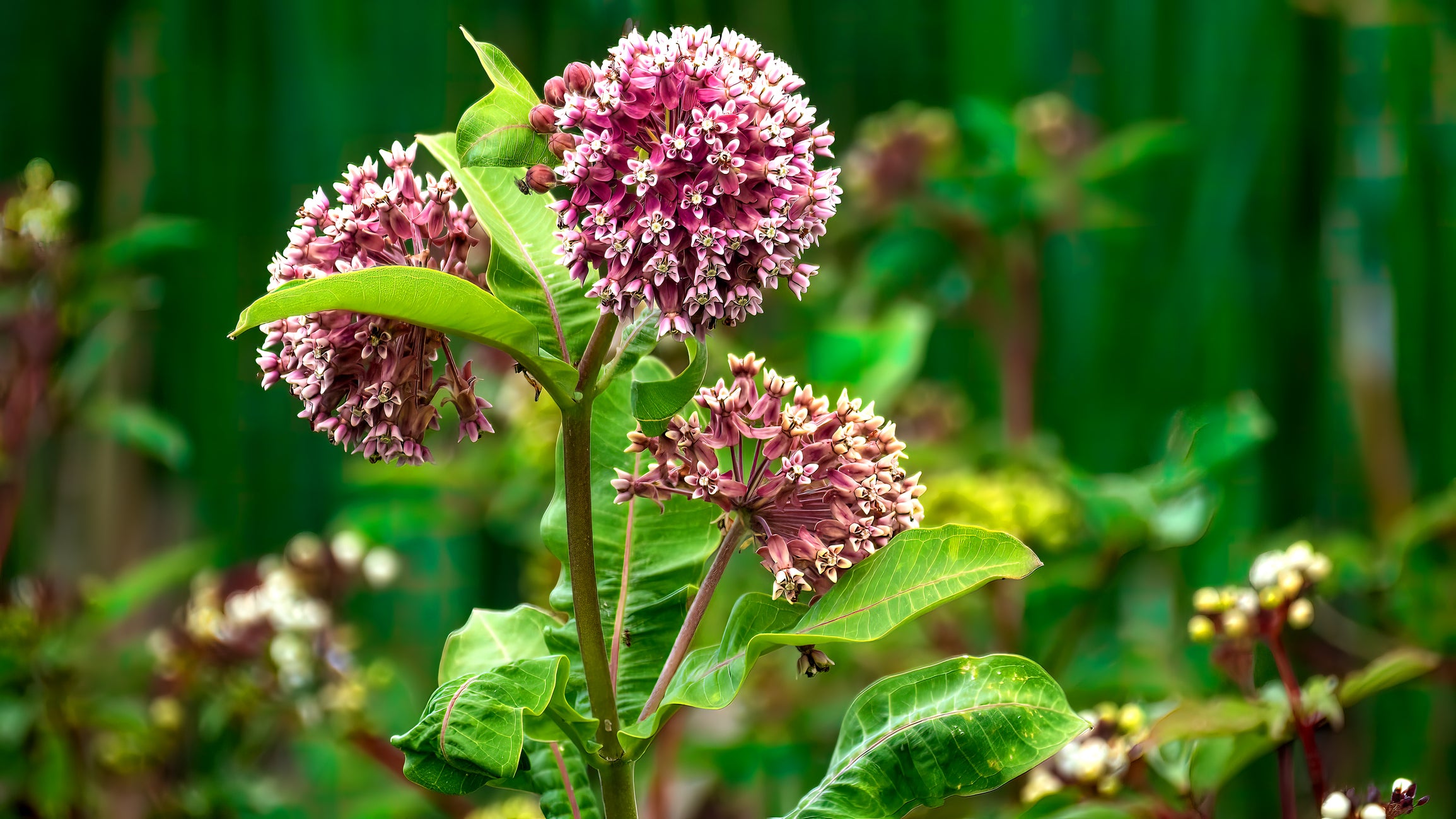
Common Milkweed
Common Milkweed is a favorite native perennial plant, and once established, it is drought-tolerant and requires minimal care. The plant has several appealing traits, and Common Milkweed is as attractive as it is beneficial. This upright-growing perennial produces tall stems, usually between three and five feet high. The flowers are globe-shaped and cluster in groups on the plant, their petals soft pink to mauve in color. Blooming from early to midsummer, the honey-scented flowers are loved by many different pollinators and attract both bees, butterflies, and hummingbirds.
Common Milkweed is a wonderful addition to any garden.
The large and showy flower clusters are a striking addition to the garden. After blooming, the flowers are replaced by clusters of large, distinct seedpods. As the pods mature in late summer to fall, they split open to release the silky wind-borne seeds inside. The seeds disperse easily with the help of their little parachutes and can spread across a garden or meadow in a matter of days.
Monarchs are particularly drawn to the plant and are dependent upon it for food and a place to lay their eggs. Milkweed is a host plant for monarch butterflies, and they will lay their eggs only on milkweed plants. Monarch caterpillars feed on the leaves of milkweed plants until they are ready to form chrysalises. By planting Common Milkweed, we can directly aid and support the monarch population and work to reverse their decline.
The Common Milkweed plants have nectar-rich flowers also provide a valuable food source to a host of pollinators.
Bumblebees, honeybees, native solitary bees, and other butterfly species are all regular visitors to the flowers. It is an excellent plant for supporting wildlife and can help increase biodiversity and pollinator success in the surrounding garden. Native to most of North America, this plant is hardy and well-adapted to our local growing conditions. Milkweed does best in full sun but will also tolerate light shade. It can also tolerate a range of different soil types, from sandy to clay and loamy soil. The plant has a deep root system, making it drought-tolerant and helping the plant to survive even during difficult years with low rainfall. Common Milkweed is a wonderful choice for anyone who loves native plants and would like to create a butterfly or pollinator-friendly garden.




